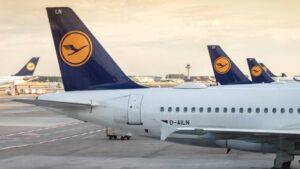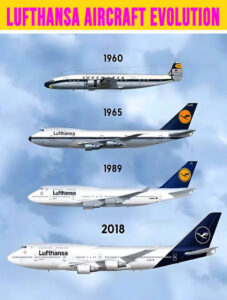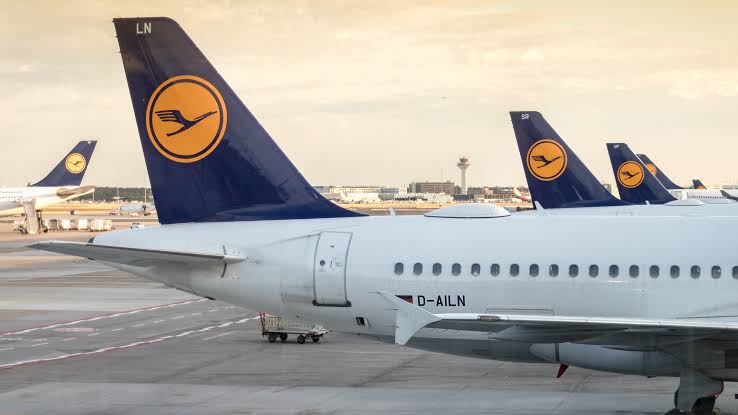These Are The 6 Oldest Aircraft In The Lufthansa Fleet
Lufthansa, Germany’s flagship carrier, boasts a rich aviation history and a diverse fleet that has evolved over the decades. As of March 2025, while the airline has been progressively modernizing its aircraft, several longstanding workhorses continue to serve diligently. Here, we explore six of the oldest aircraft still active in Lufthansa’s fleet, highlighting their histories and contributions to the airline’s operations.
1. Airbus A321-100 (Registration: D-AIRH)
Leading the list is the Airbus A321-100, registered as D-AIRH. Delivered in July 1993, this aircraft has surpassed 31 years of service. Throughout its tenure, D-AIRH has been a staple on European routes, connecting major cities such as London, Paris, and Madrid from its Frankfurt base. Its longevity underscores the durability and reliability of the A321-100 model in short- to medium-haul operations.

2. Airbus A321-100 (Registration: D-AIRA)
Close in age to D-AIRH is another Airbus A321-100, bearing the registration D-AIRA. Also delivered in 1993, D-AIRA has been a consistent performer on Lufthansa’s European network. Its three-decade-long service highlights the aircraft’s robustness and the airline’s commitment to maintaining its fleet to the highest standards.
3. Airbus A321-100 (Registration: D-AIRB)
Joining its counterparts, D-AIRB is another Airbus A321-100 that has been part of Lufthansa’s fleet since 1993. With over 30 years in operation, D-AIRB has played a pivotal role in facilitating intra-European travel, serving destinations such as Rome, Amsterdam, and Brussels. Its enduring presence reflects the A321’s adaptability to various market demands.
Simple Flying
4. Airbus A319-100 (Registration: D-AILA)
The Airbus A319-100, registered as D-AILA, entered service with Lufthansa in 1996, marking over 28 years of operation. This aircraft has been instrumental in connecting secondary cities across Europe, offering flexibility on routes with varying passenger demand. D-AILA’s sustained service life exemplifies the A319’s efficiency and suitability for short-haul flights.
5. Airbus A340-300 (Registration: D-AIGL)
Among Lufthansa’s widebody fleet, the Airbus A340-300 registered as D-AIGL stands out with over 28 years of service since its delivery in 1996. Based in Frankfurt, D-AIGL has been a key player in long-haul operations, connecting Germany to destinations across North America and Asia. Its four-engine configuration, while less fuel-efficient by modern standards, has provided the range and capacity needed for intercontinental flights.
6. Boeing 747-400 (Registration: D-ABVM)
Rounding out the list is the iconic Boeing 747-400, registered as D-ABVM. Delivered in December 1998, this “Queen of the Skies” has been in service for over 26 years. Stationed at Frankfurt Airport, D-ABVM has ferried passengers to major global hubs like New York, Hong Kong, and Johannesburg. Its distinctive hump and spacious interior have made it a passenger favorite, symbolizing the grandeur of international travel.

Fleet Modernization and Future Outlook
Lufthansa’s commitment to maintaining a modern and efficient fleet is evident in its ongoing efforts to phase out older aircraft in favor of newer, more fuel-efficient models. The retirement of longstanding aircraft like the Airbus A320 D-AIQS in January 2025, after 32 years of service, underscores this transition. D-AIQS’s departure marks the end of an era, as it was the oldest A320 in Lufthansa’s fleet, having completed over flight
The airline’s modernization strategy includes the acquisition of next-generation aircraft such as the Airbus A350-900 and the Boeing 787-9 Dreamliner. These models offer enhanced fuel efficiency, reduced environmental impact, and improved passenger comfort. By integrating these advanced aircraft into its fleet, Lufthansa aims to strengthen its competitive position in the global aviation market while adhering to sustainability goals.
Conclusion
The continued operation of these seasoned aircraft within Lufthansa’s fleet is a testament to their enduring reliability and the airline’s rigorous maintenance standards. As Lufthansa strides towards a more modern and eco-friendly fleet, the legacy of these longstanding aircraft will remain integral to the airline’s storied history. Their decades of service have not only connected continents but have also played a significant role in shaping Lufthansa’s reputation as a leading global carrier.
While the aviation industry evolves with technological advancements, the stories of these venerable aircraft serve as a bridge between the pioneering days of modern air travel and the innovative future that lies ahead.






